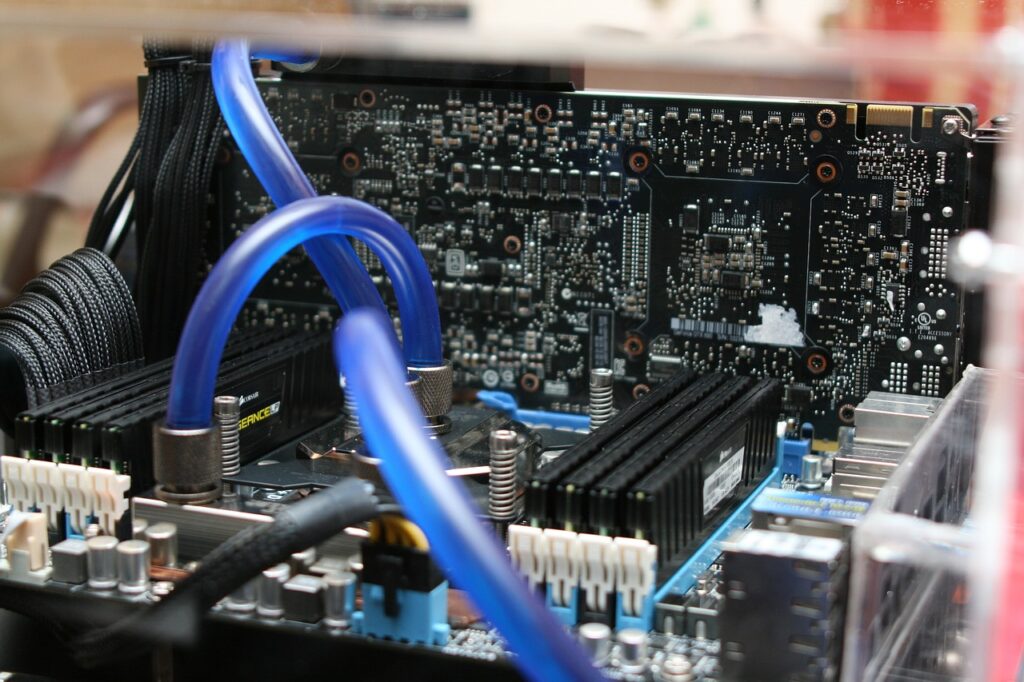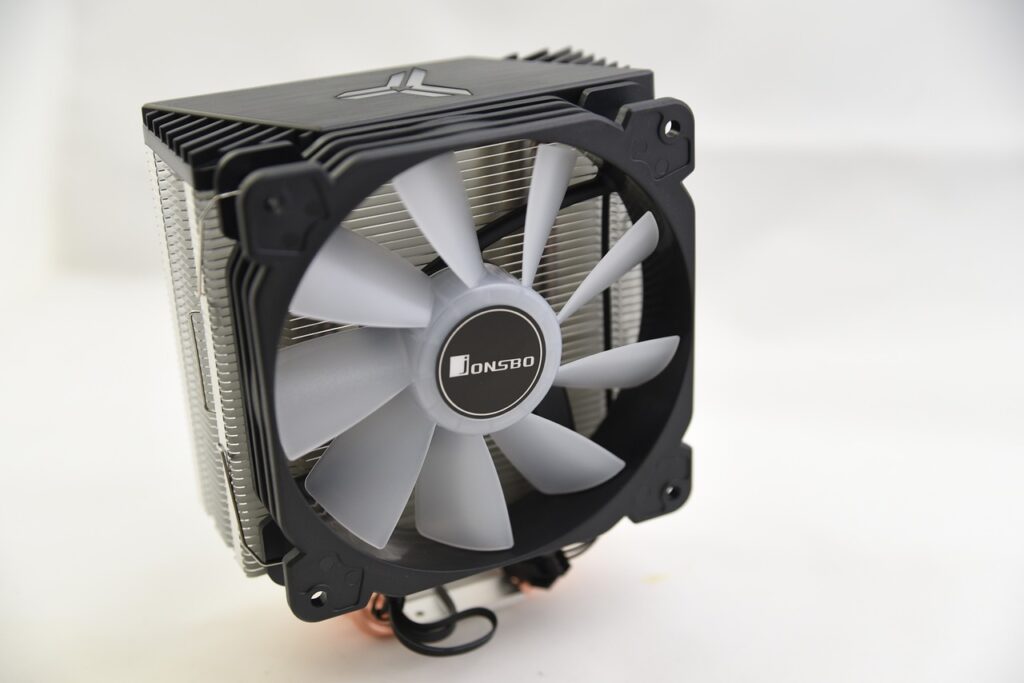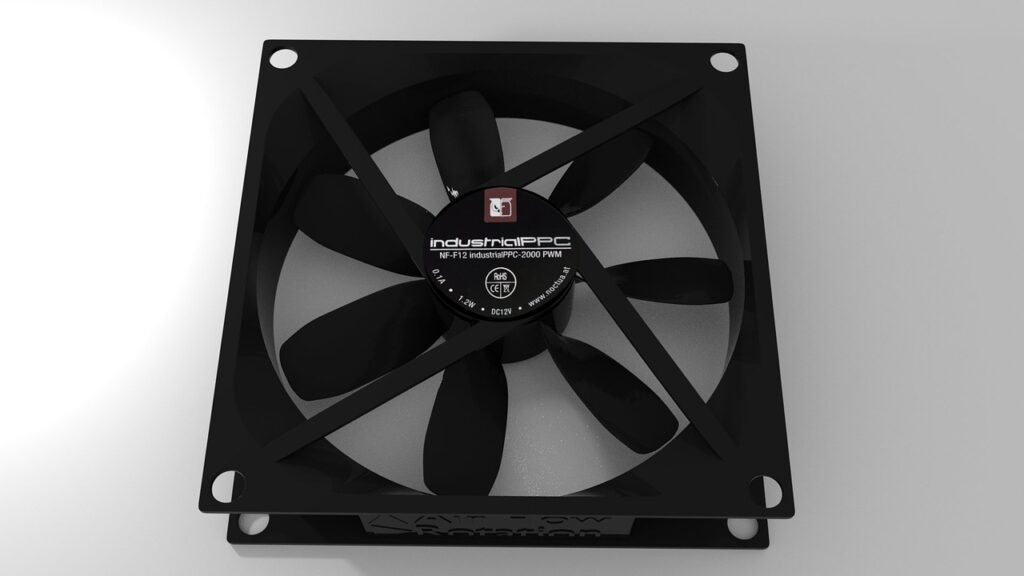If you are a PC gamer, you know how important it is to keep your system cool and running smoothly. Overheating can cause performance issues, crashes, and even damage to your hardware. That’s why choosing the right cooling solution for your gaming PC is essential. One of the most common and effective ways to cool your PC is by using fans. But how many fans do you need for your gaming PC? And where should you place them in your case?
In this article, we will answer these questions and more. We will explain the basics of PC cooling, how to determine the ideal number of fans for your PC build, what types of fans are available, and how to optimize your fan placement for maximum airflow and efficiency. By the end of this article, you will better understand how to keep your gaming PC cool.
Table of Contents
Let’s begin with understanding how cooling works in a PC.
Cooling Gaming PC
Gaming PC cooling involves keeping your PC components at optimal temperatures to prevent overheating, performance issues, or damage. Gaming PCs generate a lot of heat because they use powerful electrical components like CPUs and GPUs that work hard to run demanding games. Therefore, they need effective cooling solutions to dissipate the heat and maintain stable performance.
There are two main methods of cooling a gaming PC: air cooling and liquid cooling.
Types of Cooling
Air cooling uses fans and heatsinks to blow air over the hot components and transfer the heat away from them. Liquid cooling uses a pump, tubing, radiator, and PC fans to circulate liquid through the system and regulate the heat away from the components. Both methods have their pros and cons, depending on factors like cost, noise, maintenance, aesthetics, and compatibility.
Air Cooling
Air cooling is the most common and affordable cooling method for gaming PC. It is easy to install and maintain. It works well for most gaming PCs with moderate overclocking. However, air cooling can also be noisy, bulky, and less efficient than liquid cooling at higher temperatures. Air cooling also depends on proper airflow in the PC case, which means you need to have enough space and ventilation for the air to flow in and out of the case.
Liquid Cooling
Liquid cooling is a more advanced and expensive cooling method for a gaming PC. It is more efficient and quieter than air cooling at a higher temperature. Furthermore, it can also offer better aesthetics and customization options. However, liquid cooling also requires more installation and maintenance work. It also poses a risk of leaks or pump failures that can damage your PC components. Liquid cooling also depends on proper radiator placement in the PC case. So you must have enough space and compatibility for the radiator and diffrent PC fans.

Now that we know the two cooling technologies used in gaming PCs, we’ll focus this discussion on the type of gaming PC fans and their orientation in a typical gaming PC.
Types of Gaming PC Fans
According to red-dot geek and pcgamer.com, for gaming PCs and PCs in general, different types of fans are available for PC cooling, depending on their size, shape, function, and design. Some of the most common types of fans are:
- Case fans: These are the fans mounted on the front, rear, top, bottom, or side panels of the PC case. They are usually square-shaped and come in standard sizes like 120mm or 140mm. Their purpose is to create an airflow inside the PC case, and bring cool air in or push hot air out. Case fans can have different features like RGB lighting, dust filters, or noise reduction. The pros of case fans are that they are easy to install and maintain, and they can improve the overall cooling performance and aesthetics of your PC. The cons of case fans are that they can be noisy, bulky, and less efficient than other types of fans at higher temperatures.
- CPU fans: CPU fans are attached to the CPU heatsink, a metal block that sits on top of the CPU and transfers heat away from it. CPU fans can be either part of an air cooler or a liquid cooler. Air coolers use a fan and a heatsink to cool the CPU directly, while liquid coolers use a pump, tubing, radiator, and fan to cool the CPU indirectly. The pros of CPU fans are that they can keep your CPU at optimal temperatures and prevent overheating issues. The cons of CPU fans are that they can be expensive, complicated to install and maintain, and take up more space than case fans. Another important thing about CPUs is their clock speed. The higher the speed, the faster the fan is needed. To know more about CPU clock speed, click here.

- GPU fans: These are the fans that are built into the GPU shroud, which is a plastic cover that surrounds the GPU chip and its heatsink. GPU fans can also be either part of an air cooler or a liquid cooler. Air coolers use one or more fans and a heatsink to cool the GPU directly, while liquid coolers use a pump, tubing, radiator, and fan to cool the GPU indirectly. The pros of GPU fans are that they can keep your GPU at optimal temperatures and prevent overheating issues. The cons of GPU fans are that they can be noisy, expensive, and difficult to replace or upgrade
Orientation of Fans in a Gaming PC
The orientation of the PC fans in a gaming PC determines whether they act as intake or exhaust fans. Intake PC fans pull cool air into the PC case, while exhaust fans push hot air out. The orientation of the fans also affects the airflow direction and pressure inside the case, which can influence the cooling performance and noise level of your PC.
To determine the orientation of a fan, you need to look at the sides of the fan for a small arrow that indicates the airflow direction. If there is no arrow, you can also look at the manufacturer’s label or sticker on the fan, which usually faces the intake side. The opposite side, where you can see the fan motor and wires, usually faces the exhaust side.
The general rule for fan orientation in a gaming PC is to have more intake than exhaust fans or run your intake fans slightly faster than your exhaust fans if they are equal in number. This creates positive airflow pressure inside the case, which means more cool air is pushed into the PC case than hot air is pulled out. This can help prevent dust from entering the PC case through small gaps and improve cooling efficiency.
Now, let’s see where you should have the PC fans in your gaming PC to keep it cool and quiet.
Setting The PC Fans in The Right Place
Depending on your case size and design, you may have a combination of the following fan placement. The optimal fan placement for your PC will depend on your components and cooling needs, but here are some general guidelines:
- Front: Usually used as an intake fan to bring cool air into the case and over the components. The latest gaming PC cases have space for 2-3 120mm or 140mm fans in the front panel.
- Rear: Usually used as exhaust fans to expel hot air out of the case and away from the CPU. Better-designed cases usually have 1 120mm or 140mm fan in the rear panel.
- Top: Usually used as exhaust fans to expel hot air out of the case and away from the GPU. Most cases have space for two or three 120mm or 140mm fans in the top panel.
- Bottom: Usually used as intake fans to bring cool air into the case and over the GPU. Few Gaming casings have space for one or two 120mm or 140mm fans in the bottom panel.
- Side: Usually used as intake fans to bring cool air into the case and over the CPU or GPU. Some cases have space for one or two 120mm or 140mm fans in the side panel.

Usually, you’ll find fans at the top, front, and rear of the traditional rectangular PC cases. Now let’s cut to the point, how many fans do you need for your gaming PC.
Determining the Right Number of Gaming PC Fans
According to Pcgamer and Pcbuildinglab, the number of PC fans you need for your gaming PC depends on several factors, such as:
- The components in your PC, especially the CPU and the GPU generate the most heat and need adequate cooling.
- The case size and design you have determined how many PC fans you can fit and where you can place them.
- The cooling method you use, whether it is air cooling or liquid cooling. This will affect how much airflow and pressure you need inside the case.
- The noise level and aesthetics you prefer influence how fast and loud your fans run and how they look.
In short, There is no definitive answer to how many PC fans you need for your gaming PC, as different PC builds may have different cooling requirements and preferences. However, a general rule of thumb is to have at least three case fans in your PC: two intake fans at the front or bottom of the case, and one exhaust fan at the rear or top of the case. This creates a balanced airflow and pressure inside the case, improving cooling efficiency and reducing dust buildup.
However, depending on your PC build, you may need more or fewer PC fans than this. Here are some examples of different PC builds and the number of fans they may require:
- A low-end PC is built with a low-power CPU and GPU that does not generate much heat. You may only need one intake fan and one exhaust fan for this build or even rely on the stock fans that come with your case.
- A mid-range PC build with a moderate-power CPU and GPU that generates moderate heat. You may need two intake fans and one exhaust fan for this build, or add another exhaust fan if your case supports it.
- A high-end PC is built with a high-power CPU and GPU that generates a lot of heat. You may need three intake fans and two exhaust fans for this build, or use liquid cooling for your CPU and/or GPU to reduce the heat load.
Conclusion
In this post, we discussed the importance of proper cooling for a gaming PC and the different types of fans available for PC cooling. We learned about the basic principles of PC cooling, such as airflow direction, pressure, intake and exhaust fans, and fan orientation. We also learned about the different types of cooling fans used in PCs in general.
The number of fans needed for a gaming PC and how to calculate the ideal number of fans for a specific PC build were also shared. In other words, the number of fans depends on several factors, such as the components, case size, cooling method, noise level, and aesthetics. So a general rule of thumb is to have at least three case fans in a PC: two intake fans and one exhaust fan. However, different PC builds may have different cooling requirements and preferences.

